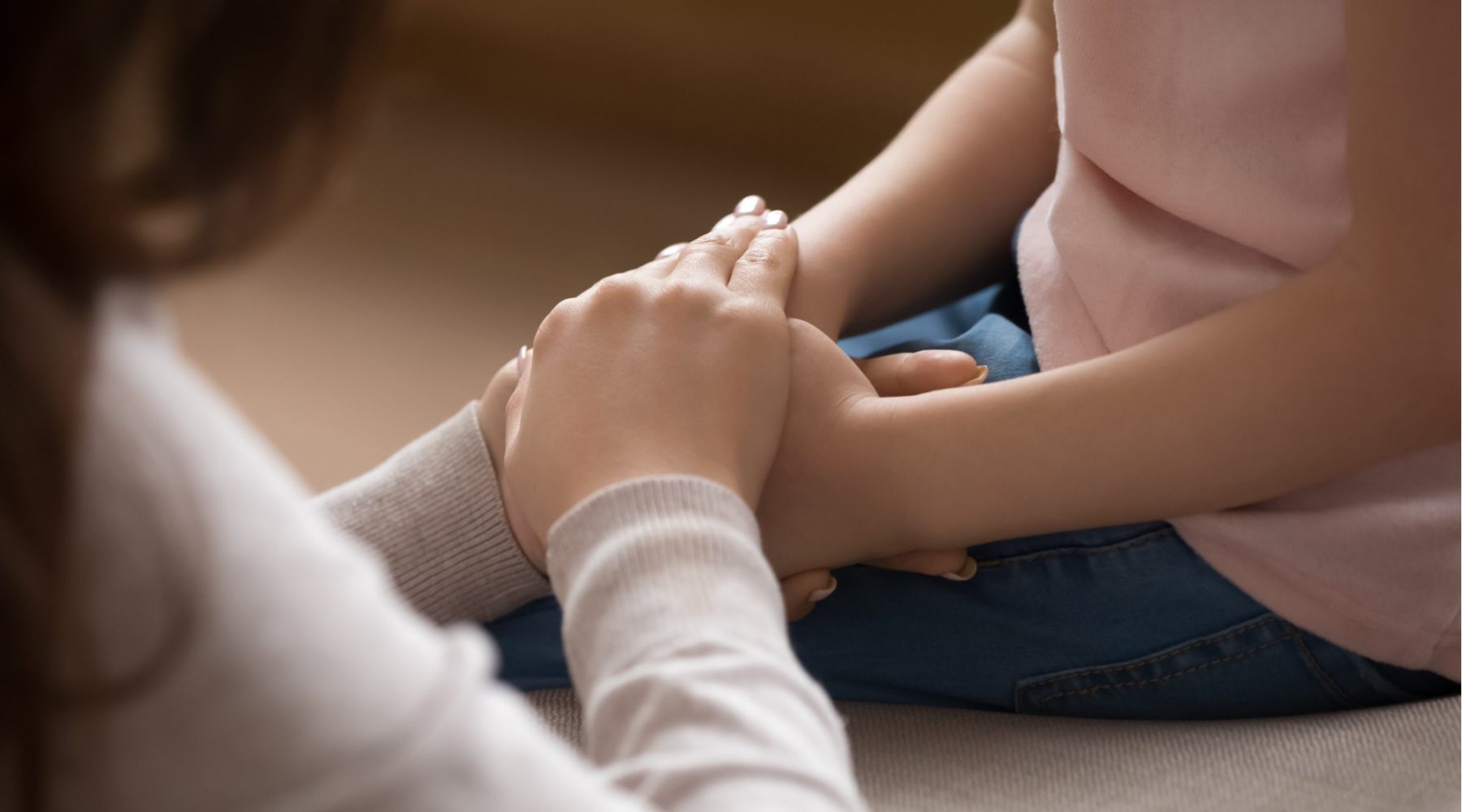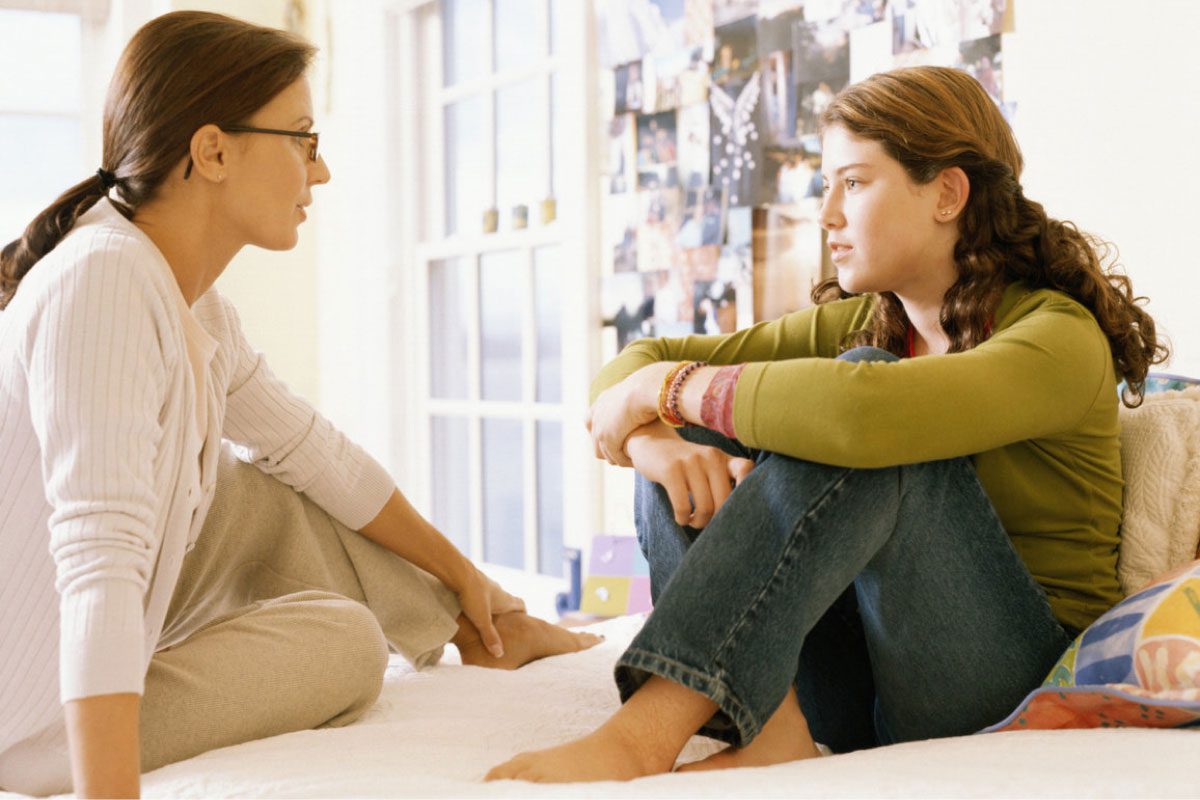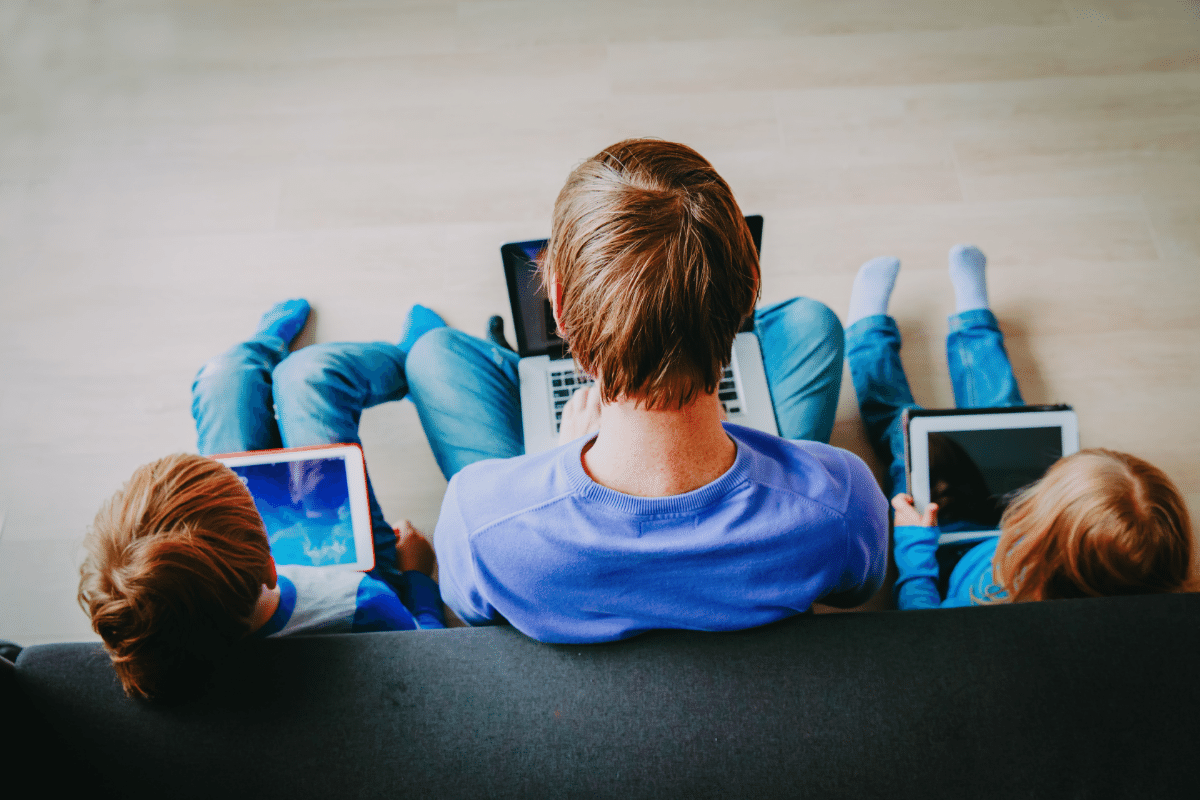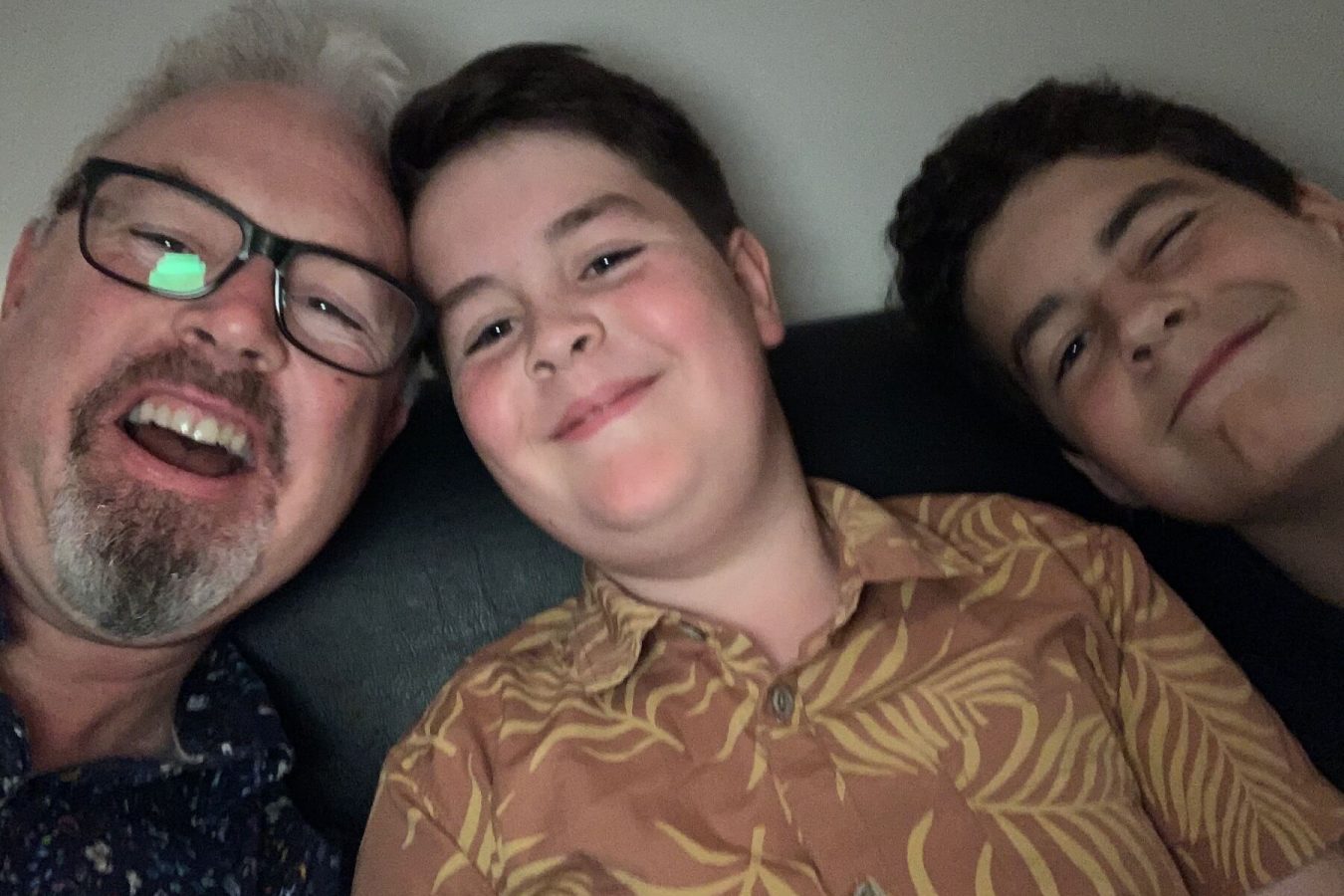
Talking to kids about the pandemic is challenging for parents. Here are some great practical approaches that can help, from Monash Education's Christine Grove, Stella Laletas, Ruth Fielding, Erin Leif and Lefteris Patlamazoglou.
Children, youth and families are critical members of the pandemic response.
Our team at Monash Education is conducting an Australian-wide longitudinal study to understand the educational and wellbeing impact of COVID-19 on children, parents, adults and families.
So far, 1987 adults and 256 youth participants have completed the survey. Preliminary findings suggest that parents don’t know how to talk about COVID-19 with their children, and struggle to respond to their child’s questions about the changes – many parents are relying on school to provide COVID-19 information.
Some parents believe their child is too young to know or understand that COVID-19 exists, citing fears of triggering nightmares, while others aren’t sure what to share about the coronavirus at home.
Parents with differing home languages also have varying levels of confidence about the information they’ve been able to access.
So far, the study data suggests that families need support to have these conversations at home. Many would prefer their children to learn about COVID-19 from an expert, a doctor or scientist. Parents are concerned about sharing false information, and how much is too much information to share.
Children need clear, concise information
We need the current health response from the Victorian government, but children and youth are also, critically, part of our pandemic response, and they need specific information about the changes.
Parents and children need this information in the language in which they’re most confident, and in which they speak to each other, to support meaningful conversations about the pandemic. Working closely with community leaders can help with swift translation.
Children have questions about COVID-19 that aren’t being addressed. These differ from child to child. Common questions include: ‘Why are we using hand sanitiser?’ ‘Why are you wearing a mask?’ ‘Can this thing kill us?’ ‘Why can’t I see Grandma?’ ‘Am I spreading it?’ ‘How can I help?’
In our study, one parent found ‘an online picture book, which the kids liked. I think what kids need varies from child to child. My son is very mathematical, so it reassured him knowing that no children had died from COVID-19, and that the risk to us was only 0.2 per cent.’
‘My daughter wanted to know a bit more about how she would know if she had it, and both of them wanted to know what they could do to avoid catching it. It empowered them to feel like they had a bit of control in their own health.’
Another parent suggested that: ‘It is critical they know the information (eg, for prevention) and I omit distressing information (eg, death rates).’

Information beyond social media
The youth in our study also want more information. Most get their COVID-19 information from social media (TikTok, Instagram, Facebook, Twitter), and are less likely to learn about COVID-19 at school, or talk about it with their parent/caregiver.
Many want to learn about COVID from professionals or at school. Some of the questions from teens we have received include:
How it started. Why it happened. If it’s possible to develop a vaccine. How it will impact our attitude to hand hygiene in the future. More about how it is treated. Why people aren’t listening.
Is it like the flu? Will there be another wave? What makes it kill you? How long will it last? How can we prevent a third wave of it?
How close are we to finding a cure? What is the probability of it reaching home? What makes it distinguishable from the flu?
Are we going to get a vaccine for corona? Are we ever going to cure corona? What is the chance that you will get or have gotten corona?
Can I have a sleepover with a friend? How effective is social distancing? Can the disease happen to disabled teenagers? Can teenagers in general get the disease?
Are pets at risk of carrying the disease? How effective is cleaning surfaces in stopping transmissions? Can I hang with friends?
How to answer the tough questions
Here are a few suggestions to support families talking about COVID-19 at home, and answer some of these questions if your teen asks.
Conversations about COVID-19 should happen at multiple levels – and be aided by campaigns where children’s questions and concerns can be acknowledged and addressed state-wide, and even nationally.
It’s imperative for governments to hold child and youth-specific press conferences where health messages can be disseminated to children and parents. A few countries, such as Finland, New Zealand and Norway, have done so, and it’s been successful, with some families learning a little more from the professional responses.
A conference would model how parents can talk about COVID-19 in their family. It’s also essential that this information be translated into languages that community members use in their daily lives.
Countering with kindness
One way to start talking about COVID-19 at home is by sharing stories of people helping during these tough times. For example, the Australian Red Cross shares a collection of silver linings during COVID-19 from around the world.
Kindness has been found to support wellbeing during COVID-19, and counteract ‘doomscrolling’.
Here are some of the ‘quiet kindness’ stories to talk about: Holli Morgan, a fifth-grade student, who started making masks for first responders, is experiencing the joy of helping someone, especially those who need it most. Or Jayden Perez, another 11-year-old student, who donated 1000 hand sanitisers to his school because he was concerned other students didn’t have them. Scout Quinn Callander (12) donated self-designed 3D-printed ear guards for hospital workers to alleviate ear pain from wearing masks for long shifts – a wonderful example of innovation and compassion during strange times.
These stories add to our ‘emotional toolbox’. They help build a bigger picture during restrictions, and show that in life there are challenges, but what we learn from them is important. It can help to acknowledge that while times get tough, we can support each other with even small acts of kindness.
This isn’t to say that everyone is affected the same way, though, as families have different vulnerabilities and supports available. Also, allowing yourself and your child time to adjust to the changes will help.
Another way to talk about COVID-19 at home is to ask your child what they know or want to know about COVID-19. As our preliminary findings suggest, there’s plenty of ambiguity about the long-term impacts of the pandemic. If you don’t know all the answers, it’s OK – parents don’t need to have the perfect responses every time, and not knowing models an important skill of tolerating uncertainty.
The key is to try to not brush off the hard COVID-19 conversations – say that you’re not sure if you don’t know, and together seek the information from reputable sites or call the COVID-19 hotline on speaker phone. Encourage your child to ask anything they’re not sure about.
Unsurprisingly, many people yearn for things to return to pre-COVID-19 life, and report a sense of loss as a result of the pandemic. This is often around mental and physical health, but it also has to do with people’s sense of community and social life. Looking after yourself and checking in with others can improve the way you feel and how you can support your child.
Supporting kids with disabilities
The rapid changes in routine and expectations for kids with disabilities may be even more challenging. Many of the recommendations for talking about COVID-19 with all children can be helpful for those with disability.
However, some with language and learning differences (depending on the difficulties) may need simpler and more direct support to navigate these changes, since they may have trouble participating in conversations about COVID-19, and understanding what COVID-19 means.
A few helpful strategies include:
Use visual supports. The daily routine may be very different now, compared to what it was pre-COVID-19. Using visual schedules can increase the predictability of the day, and help your child anticipate what will happen. This can go a long way towards reducing stress and anxiety.
Take pictures of different activities that your child may want or need to complete throughout the day. Allow them to help put the activities in order on the schedule. This will allow your child to have more choice and control over how the day will go.
Set small, achievable goals. It might be hard for your child to learn at home, and for them to view you in a new role. Try to break down tasks into small, teachable parts, and make learning fun and rewarding. When your child is successful, provide praise and recognition for a job well done.
Once your child completes a small task, allow a break. Over time, you’ll start to be able to increase the difficulty level of the task, and your child will feel successful and supported to participate in “learning from home”.
Focus on the “essentials”. Essential skills should be prioritised. While your child is spending time at home, it’s a great opportunity to work on the skills that are important to staying safe and healthy.
Some of these skills include thorough hand-washing, using hand sanitiser, wearing a mask, having a temperature taken, maintaining personal space and distance (if appropriate), waiting, drinking and eating from one’s own water bottle or plate, participating in regular physical activity, exploring alternatives to current unavailable fun activities (for example, watching videos of trains, given limits to public transportation), logging into and using the computer, and talking to people on video-conference platforms.
These are functional skills that will benefit your child now, and also help them re-engage in activities outside of the house in a safe way when restrictions ease.
Supplement verbal information with pictures. When talking to your child about COVID-19, be sure to use language at an appropriate level. This may mean keeping information short, direct and simple. You may also be able to supplement verbal information with pictures, to help them understand what’s happening and how it affects them. These pictures can be used to help convey information about what COVID-19 is (“COVID-19 is a germ that makes people sick, but we can do things to stay healthy”), how to stay healthy (wash hands, don’t touch your face, stay at home, use a tissue), and what activities are available for your child to do at home (playing games, going outside, watching shows, talking to friends and family online).
More information about supporting a child with a disability during COVID-19 can be found at:
COVID-19, distancing, kids with disability
Autism and Coronavirus (COVID-19)…The Essentials
Coronavirus (COVID-19) Amaze Community Information
This article appeared on Monash University’s Lens, and is reproduced under the Creative Commons licence. You can read the original.


